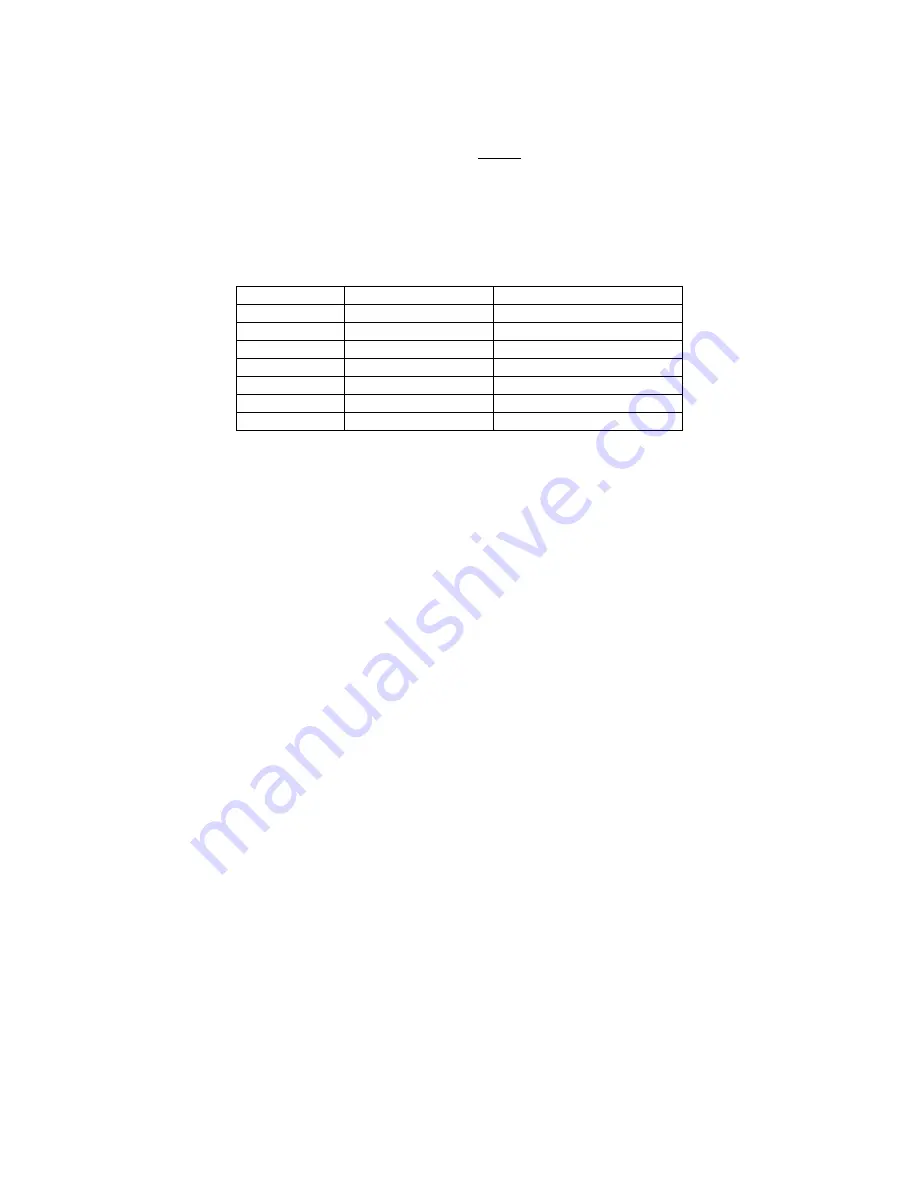
3
The lowest amplitude a healthy human ear can detect is 20 millionths of a Pascal (20
Pa). Another scale
more commonly used to describe sound pressure level is the decibel (dB). To convert the output voltage
signal (measured in Vrms) to sound pressure level (measured in decibels), use the following formula:
dB
P
S
V
SPL
ref
rms
Log
20
where
S
is the sensitivity of the microphone in mV/Pa, and
P
ref
is the reference pressure in air, which is
20 x 10
-6
Pa. The decibel scale is logarithmic and more closely matches the response reactions of the
human ear to the pressure fluctuations. Some examples of typical sound pressure levels are shown in the
table below.
dB
Pressure
Example
0
0.00002 Pa
Threshold of Hearing
60
0.02 Pa
Business Office
80
0.2 Pa
Shop Noise
94
1 Pa
Large Truck
100
2 Pa
Jackhammer
120
20 Pa
Airplane Take-Off
140
200 Pa
Threshold of Pain
At very high-pressure amplitudes, the microphone’s diaphragm will start to distort the measured sound
pressure. The maximum rated sound pressure level of a microphone is expressed as the amplitude at
which the Total Harmonic Distortion (THD) reaches a specified amount, typically 3% THD. It is im-
portant to note that the highest sound pressure level that can be measured with a microphone system may
be limited by other parts of the system, such as the preamplifier, signal conditioner, or instrumentation.
Conversely, the Cartridge Thermal Noise (CTN) specification provides the lowest measurable sound pres-
sure level that can be detected above the electrical noise inherent within the microphone.
Temperature and pressure will affect the sensitivity of a microphone but these effects can be accounted
for by adjusting the recorded microphone values using the coefficients specified for each microphone
model. Simply calculate the difference in temperature and ambient pressure from those recorded during
calibration and multiply this value by the proper coefficient to determine the sensitivity offset. In most
cases, the offset will be very small and is therefore unnecessary.
5.0
Accessories
Transducer Electronics Data Sheet (TEDS)
Preamplifiers can incorporate TEDS devices, which have a built in read/write memory that contains rele-
vant information about the sensor and its use. Information includes manufacturer name, model number,
serial number, sensitivity, etc. The operation of TEDS devices is defined by IEEE P1451.4. A TEDS mi-
crophone system includes a microphone mated with a preamplifier that contains the TEDS memory pro-
grammed with both the microphone and preamplifier information. This is particularly helpful when using
large channel count systems and array set-up.
A-Weight Inline Filter
The inline filter is used in conjunction with an ICP
®
preamplifier to provide A-weighting for acoustical
measurements. The filter’s frequency response is weighted according to the A-weighting filter portion of
both ANSI S1.4 and IEC 60651 Type 1 Sound Level Meter Standards. ICP
®
signal conditioners of 4 mA
or greater are recommended when using inline filters.
Windscreens and Nose cones
Wind induced noise can be reduced by using a windscreen. This can offer some protection against dust
particles and mechanical damage. In the presence of high-speed airflow from a well-defined direction,
such as wind tunnels, a nose cone is recommended. When using windscreens and noise cones, the fre-
quency response of the microphone will be attenuated at higher frequencies.






























